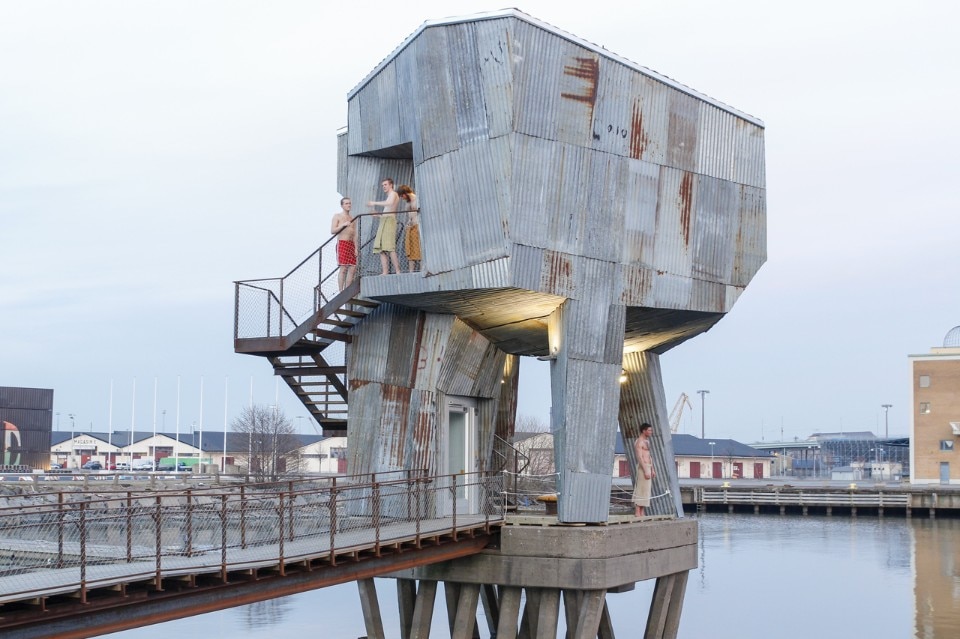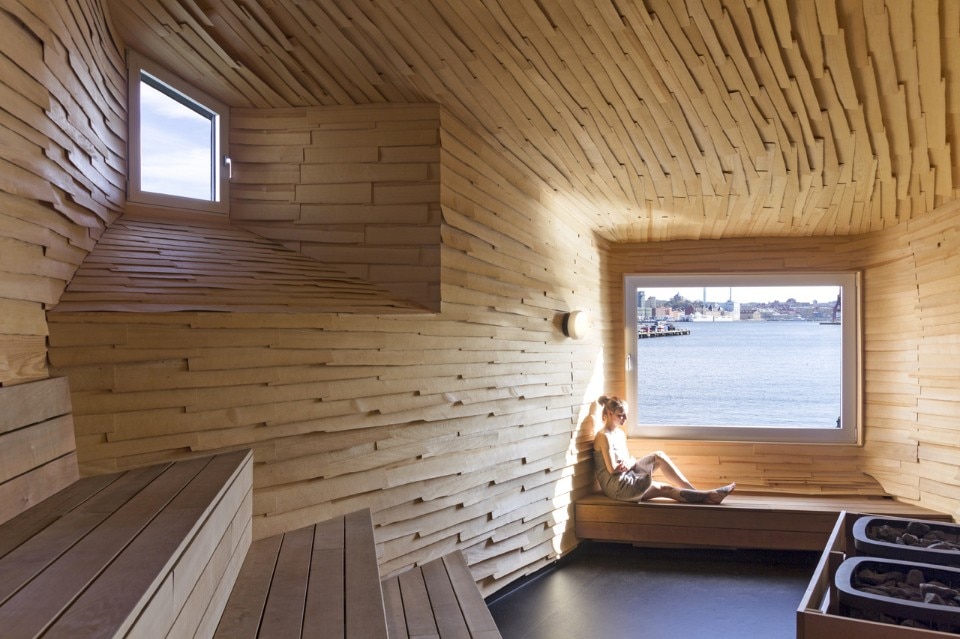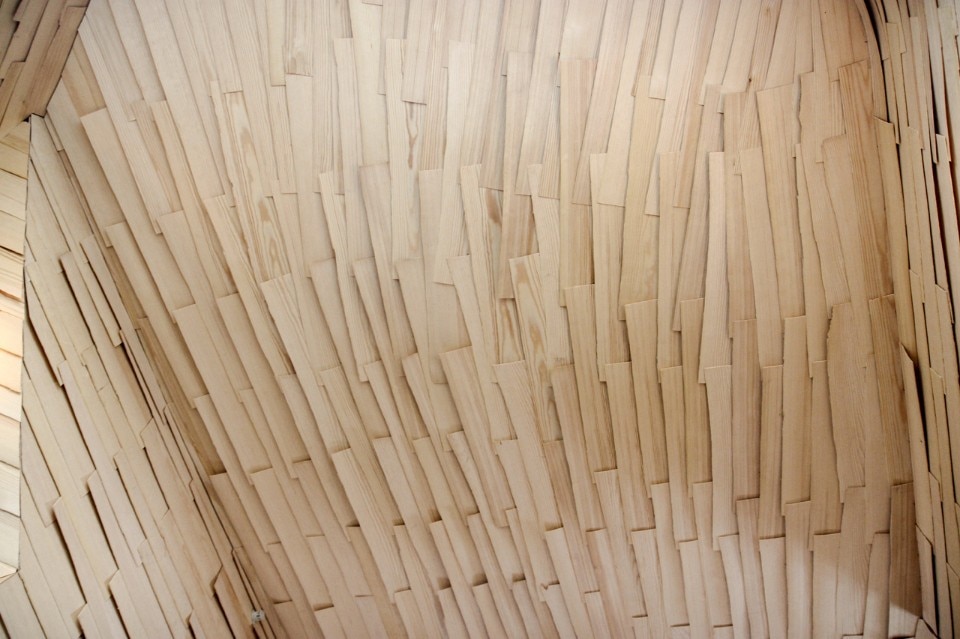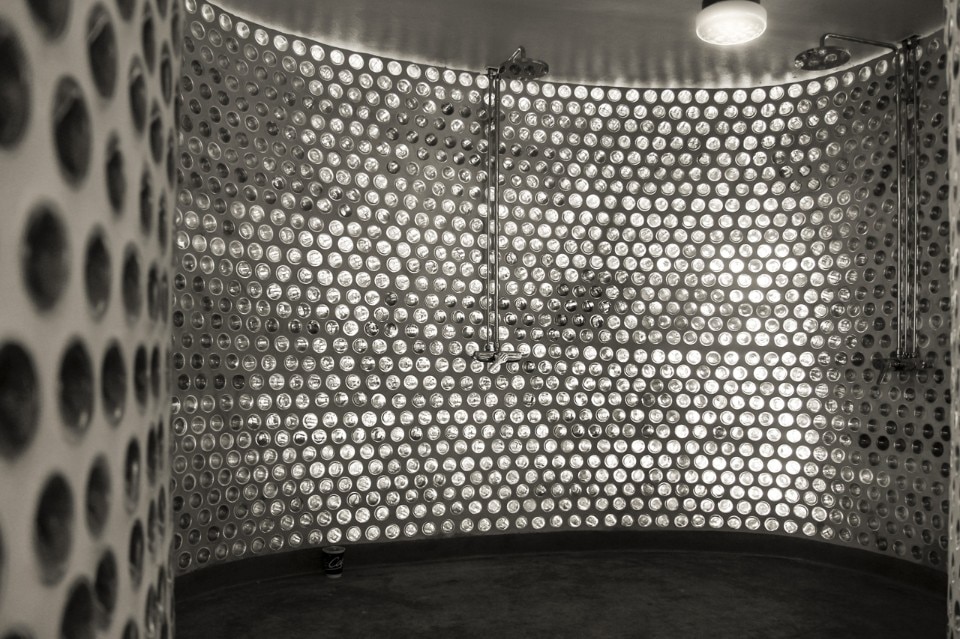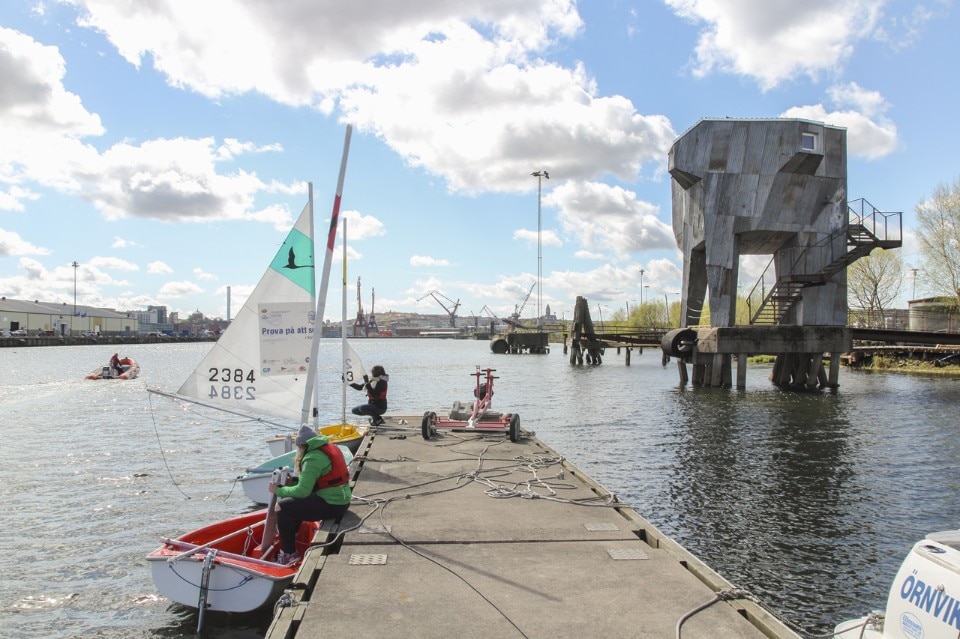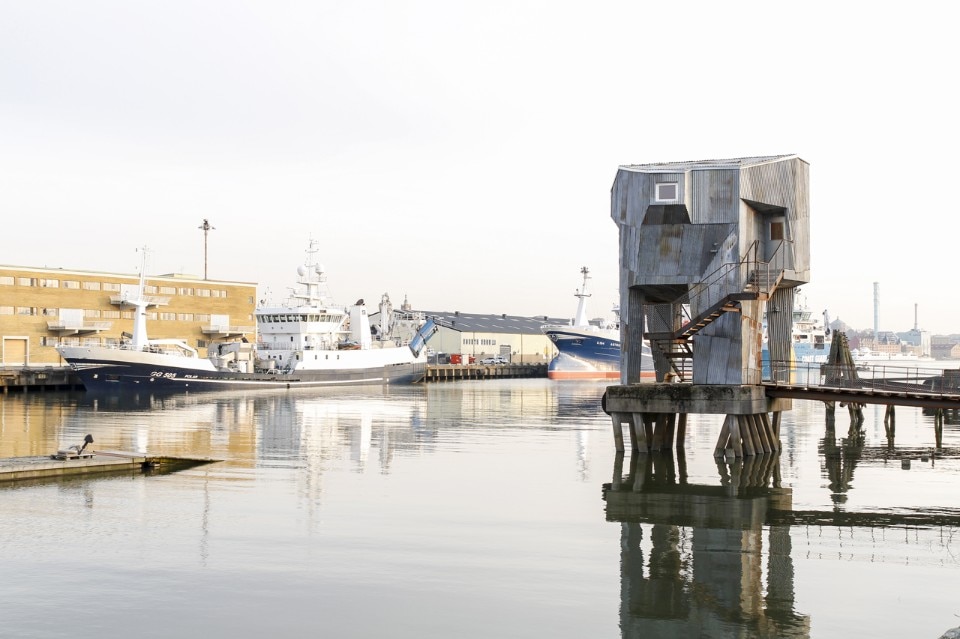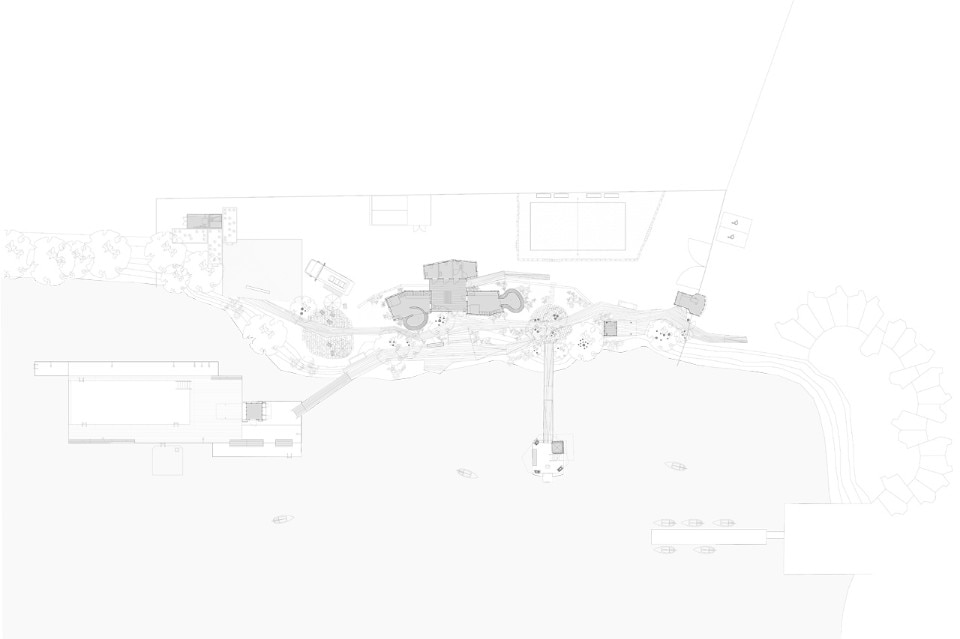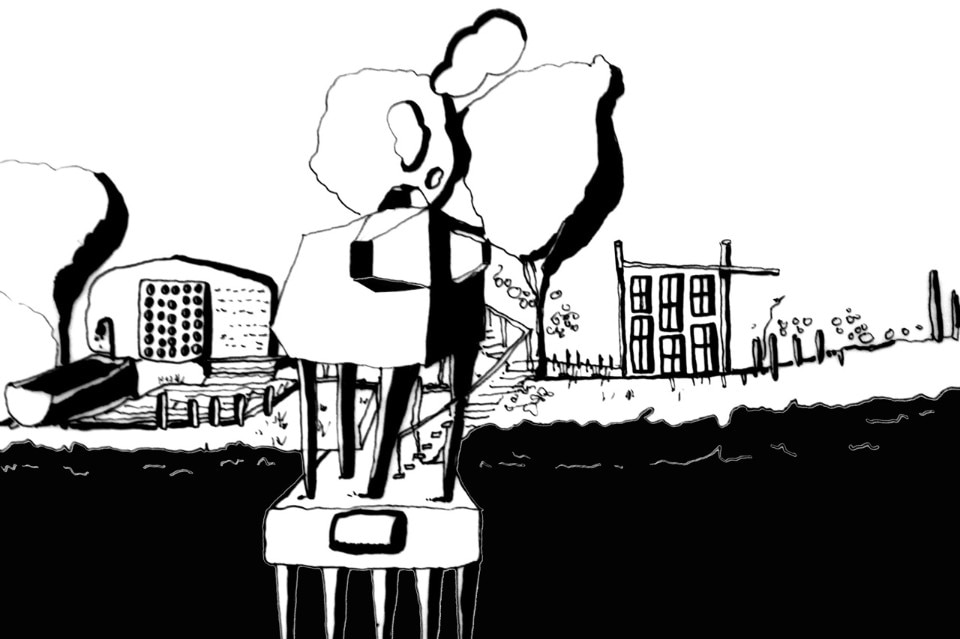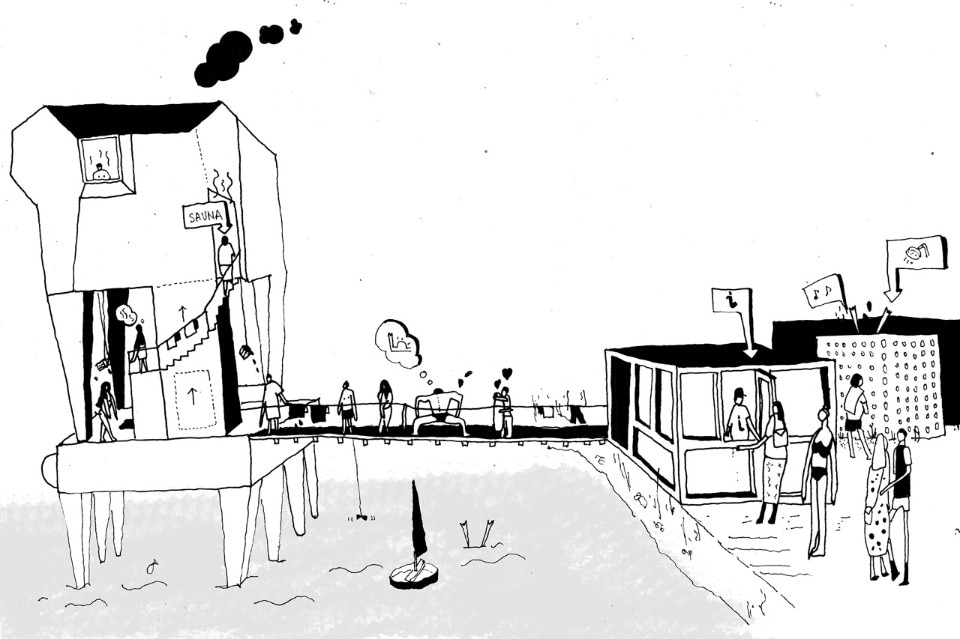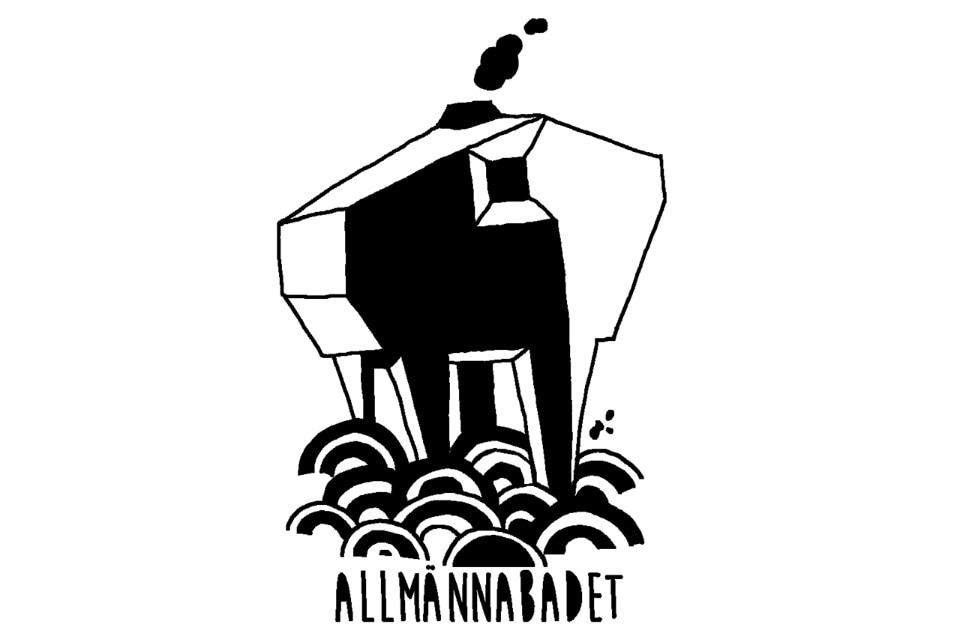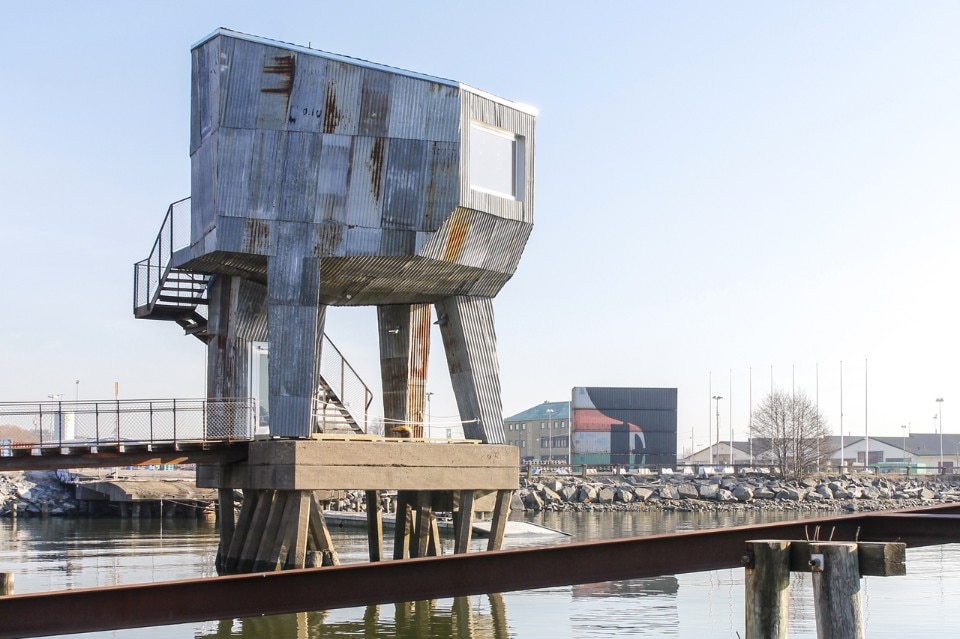
For sustainable urban growth and the creation of a specific harbour park at Frihamnen it is necessary to preserve the memory of the site by attempting to intertwine with old structures, both physically and emotionally, the feeling and the qualities of the current state of ‚waitingʻ for new uses, buildings and temporary interventions.
Establishing bathing in this rough and hostile environment is, above all, a way to change the perception of it: creating intimate spaces, new leisure experiences and the opportunity for communication between different groups of people. Since water pollution does not allow, for the moment, direct bathing activities in the docks, the establishment of Bathing Culture activities will generate a form of prediction for the future of this particular setting.
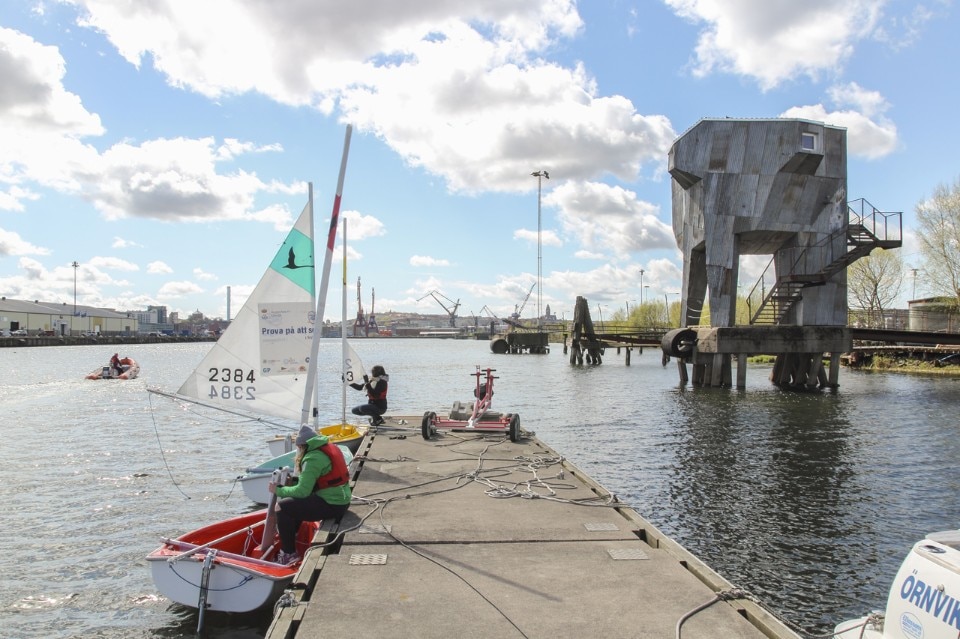
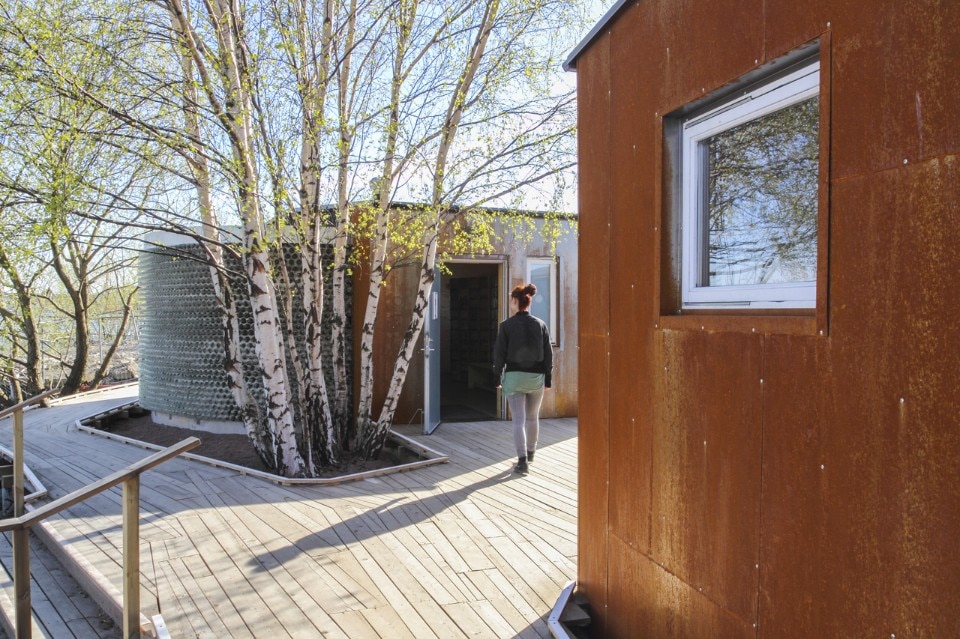
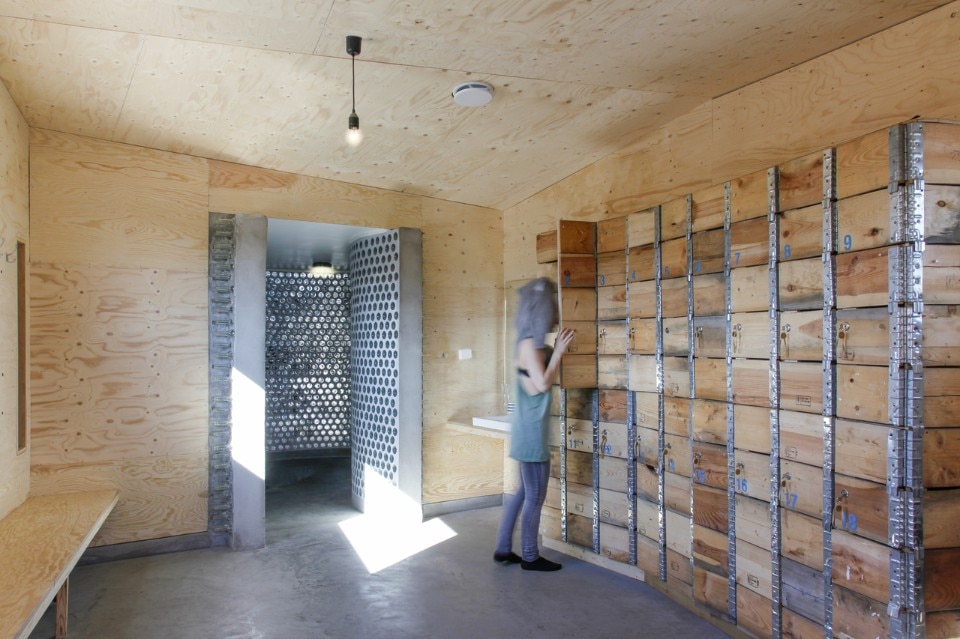
The choice of materials enhances the intended dramaturgy for visitors to the bath. Cold and weathered metal on the outside, ready-mades from naval equipment, produce the sensation of something that could naturally belong to the harbor site. The wooden path with its pattern, the physical and visual connection between the different buildings, recall floating wood pieces along the shore.
The larch shingles of the sauna interior, made of thick veneer, are thin enough to react to the changes of temperature and humidity so that their shape changes in use. The warm space breathes with the visitors. The direction of the shingles’ pattern on the walls and ceiling creates at the same time an embracing space and a focus on the view out of the big window towards the silhouette of the cranes and the city center. This visual connection between the new intimate space inside the “hostile” harbor environment and the old city was from the beginning a crucial aspect for the choice of the site.
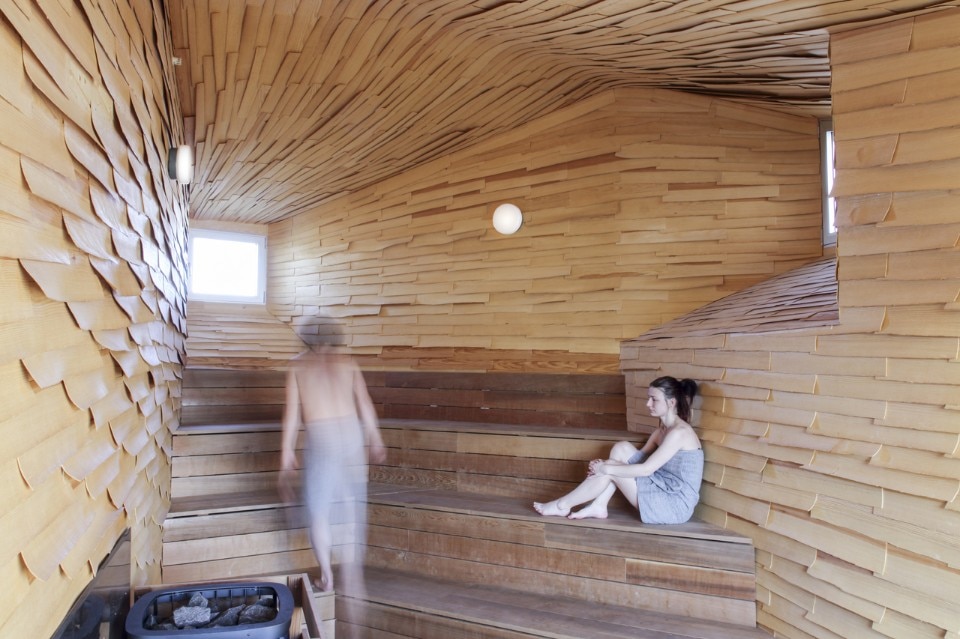
Göteborg Bathing Culture
Program: sauna
Architect: raumlaborberlin
With: Bruno Gonçalves, Christian Göthner, Eduardo Conceição, Florian Stirnemann, Jordane Coquart, Katharina Spagl, Maria Garcia Perez, Mariana Marques da Silva, Martina Blom, Sam Dias Carvalho
Commissioned by: Älvstranden Utveckling AB
Completion: 2015


